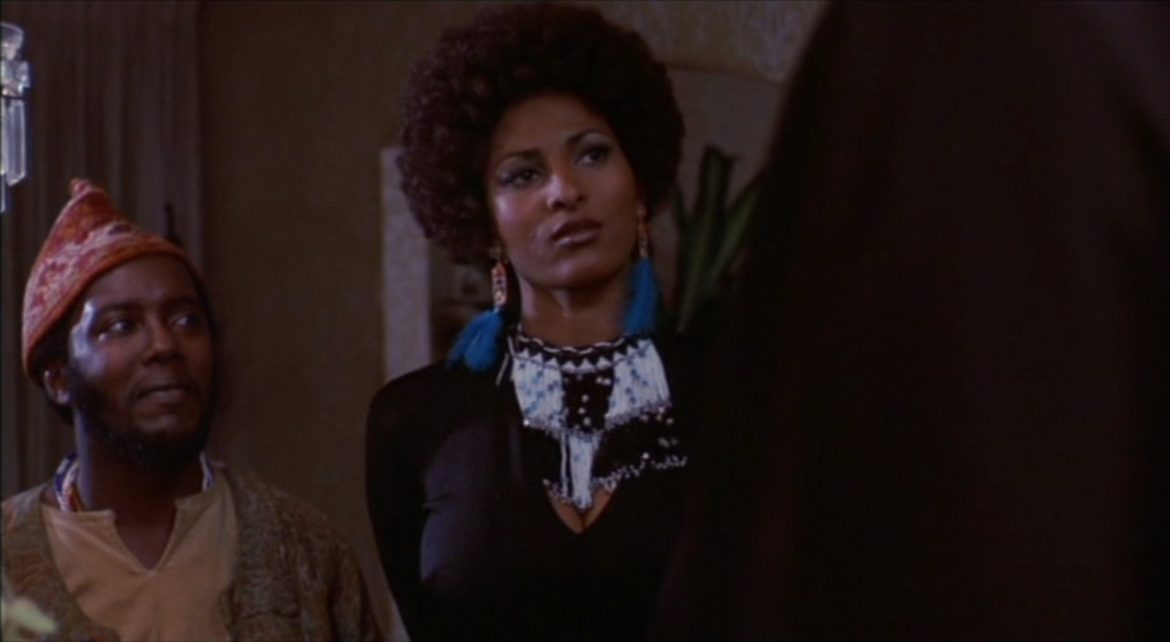In his A-Z of Horror, Clive Barker includes a section on Black treatments of the familiar horror themes, focusing on Blaxploitation shock features and modern-day horror-core ensembles like The Gravediggaz (featuring Rza from Wu-Tang, under the name The Rza-rector). While there’s an inescapable element of silliness to these efforts (case in point: “Rza-rector”), the main idea – pairing the horror of the Black experience in America to established horror movie themes – has always been a smart one in my opinion. Candyman might be the best example, as it’s awesome and terrifying, but the underlying notion is sound. It’s no wonder that nascent Black Power politics found its way into horror back in the day, a genre fundamentally about Otherness, alienation, power, and violence.
Scream, Blacula, Scream doesn’t quite live up to this high-minded thesis statement. For starters, it is a film called Scream, Blacula, Scream. In the grand tradition of Faster, Pussycat! Kill! Kill! and similar outings pitched to the bleachers, it is first and foremost concerned with delivering thrills, chills, and kills. It’s mostly unique for aiming squarely at a Black audience – no white folks ever show up on screen (except for a bewilderingly seated elderly couple at a party, a detail that will approach “person in animal suit blowing guy in The Shining” levels of inscrutability if I focus on it too much), and the entirety of the film transpires in a world where such people seem not to exist. White people tend to, let’s say, turn up in American films, so in and of itself, that’s interesting.
William Marshall is Blacula, cursed ages agp by a villain (a white guy, weird!) to live for all time in desperate need. Pam Grier is Lisa Fortier, 1973’s pre-eminent voodoo master and heir to the throne of a voodoo cult after her adoptive mother’s passing, despite her lack of blood lineage. (Still with me?) As it turns out, Blacula himself is kind of in the Angel mold, if you’re a Whedon fan: torn between his blood-lust and his desire to rid himself of evil. Lisa’s intimacy with voodoo is his hope – he thinks it can change the destiny forced on him – though he still can’t keep himself from killing everyone around her, and occasionally just for fun, apparently. That’s just how it is for Blacula.
The movie suggests that his victims are deserving. We recognize them by their hair and class status. Grier’s Lisa, her ex-detective boyfriend Willis, and Blacula himself all have natural hair, whereas everyone else seems to be rocking variations on a 1950s girl-group beehive or an incredibly elaborate curly look, distractingly. This is probably unique in the history of vampire films.
The cultural critiques don’t stop there. An early scene features our protagonists meeting at an exhibition of African art put on by a bourgeois Black collector in his mansion – you will not be surprised to find people die at this party (and which people those are – again, mind the hair). Piling on the subtext, Blacula kills two pimps on his walk home, announcing (kind of out of nowhere, really) that they are the new slavemasters, adopting the tactics of their former oppressors. Later, the police chief says, for no particular reason, “Am I prejudiced on the basis of race, creed, and color? Sure! But nobody’s perfect.” This is actually one of Scream, Blacula, Scream’s lighter moments: everyone takes his unprompted revelation more or less in stride. It’s not what you’d call a subtle film.
It is, however, what you’d call an awesome film. It’s filled with inspired set pieces, just-this-shy-of-laughing-at-it digressions, and several actually scary moments. It’s a horror movie, a joke on horror movies, a proto-tortured vampire with a soul picture, an early 70s showcase for Black talent, and a fist in the air protest.
It’s also completely fucking weird. I can’t recommend it highly enough.

